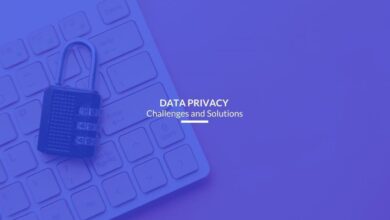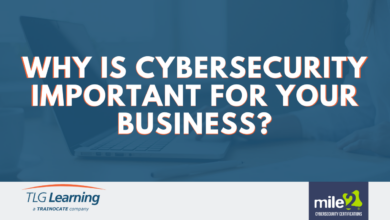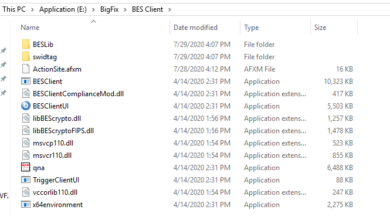
Data Breached Firm Blames Customers for Reusing Passwords
Data breached firm blames customers for reusing passwords – a headline that’s become all too familiar. It’s a frustrating finger-pointing exercise that leaves us, the users, feeling vulnerable and questioning who’s truly responsible when our personal information is compromised. This isn’t just about a company’s negligence; it’s a complex web of shared responsibility, user behavior, and technological limitations. We’ll dive into the arguments, explore the solutions, and ultimately, figure out how to better protect ourselves in the ever-evolving digital landscape.
The recent surge in data breaches has highlighted a critical issue: the widespread practice of password reuse. While companies certainly bear responsibility for robust security measures, the reality is that many users contribute to their own vulnerabilities by employing the same passwords across multiple accounts. This interconnectedness means one breach can unravel a user’s entire online identity, leading to identity theft, financial loss, and a significant erosion of trust.
This post will examine both sides of the coin – the company’s obligations and the user’s role – to offer a balanced perspective on this critical issue.
The Firm’s Responsibility

Following a data breach, a firm’s responsibility extends far beyond simply acknowledging the incident. Legal and ethical obligations demand a proactive and transparent response, especially when password reuse is a contributing factor. Blaming customers entirely deflects from the firm’s own role in securing user data and protecting against foreseeable risks.
Legal and Ethical Obligations After a Data Breach
Legally, firms are often bound by data protection laws like GDPR (in Europe) or CCPA (in California), which mandate specific actions following a breach. These include notifying affected individuals, providing details about the breach, and outlining steps taken to mitigate further damage. Ethically, a firm has a responsibility to its users to maintain their trust and protect their sensitive information.
Shifting blame for password reuse, while partially true, overlooks the firm’s responsibility to implement robust security measures and educate users on best practices. Failure to do so can result in significant reputational damage and potential legal repercussions.
Improving Password Security Practices
Firms should implement multi-layered security strategies to enhance user password protection. This includes moving beyond simple password requirements and implementing strong authentication methods like multi-factor authentication (MFA). MFA adds an extra layer of security by requiring users to provide multiple forms of verification, such as a password and a code from a mobile app, making it significantly harder for attackers to gain access even if a password is compromised.
Furthermore, firms should offer password managers or integrate them into their systems, helping users create and manage strong, unique passwords across different accounts. Regular security audits and penetration testing are also crucial to identify and address vulnerabilities before they can be exploited.
Approaches to Informing Users About Data Breaches and Password Security
Different firms adopt varying approaches to informing users about data breaches and password security. Some opt for brief email notifications, while others provide more comprehensive explanations on dedicated web pages with FAQs and resources. Some companies proactively offer credit monitoring services or identity theft protection to affected users. The best approach balances transparency with clear and actionable steps users can take to protect themselves.
Overly technical explanations can be confusing, while overly simplistic ones can minimize the severity of the breach and its implications. The most effective communication is clear, concise, and empathetic, acknowledging the impact on users and offering practical solutions.
Comparison of Security Practices Across Companies
The following table compares the responses of three hypothetical companies (Company A, B, and C) to a similar data breach involving password reuse:
| Company Name | Breach Response Time | User Communication Methods | Security Improvements Implemented |
|---|---|---|---|
| Company A | 24 hours | Email notification, dedicated webpage with FAQs, password reset assistance | Mandatory MFA implementation, enhanced password complexity requirements, security awareness training |
| Company B | 72 hours | Email notification only | Password reset enforced, no other significant changes |
| Company C | 48 hours | Email notification, social media posts, phone support | MFA rollout plan announced, improved data encryption, vulnerability scanning program |
User Behavior and Password Security: Data Breached Firm Blames Customers For Reusing Passwords
Let’s be honest, blaming users entirely for data breaches caused by password reuse is a convenient, albeit simplistic, approach. While individuals bear responsibility for their online security, a deeper understanding of user behavior and the challenges they face is crucial to crafting effective solutions. The reality is that many factors contribute to the widespread practice of password reuse, making it a complex issue demanding a multifaceted approach.The convenience factor is a major driver.
Remembering dozens of unique, complex passwords is a monumental task for the average person. This cognitive burden leads many to opt for the easier, albeit riskier, path of reusing the same password or a small variation across multiple accounts. Furthermore, many websites and services make it difficult to manage passwords, lacking strong password generation tools or multi-factor authentication options.
This lack of user-friendly security features exacerbates the problem.
Factors Contributing to Password Reuse
Several factors contribute to the widespread reuse of passwords. Convenience, as mentioned earlier, is paramount. Users often prioritize ease of access over security, leading to the adoption of simple, easily remembered passwords that are reused across various platforms. Another significant factor is the sheer number of online accounts individuals maintain. Managing numerous accounts with unique, strong passwords is challenging, even with password managers.
Additionally, the lack of clear and concise security awareness training by many organizations leaves users unaware of the inherent risks of password reuse. Finally, the complexity of modern security protocols can be overwhelming for average users, leading to frustration and a greater likelihood of resorting to simpler, less secure practices.
Common User Behaviors Increasing Vulnerability
Beyond password reuse, several common user behaviors significantly increase vulnerability to data breaches. Using weak passwords (like “password123” or variations of personal information) is a major problem. Clicking on suspicious links in emails or text messages, often phishing attempts designed to steal login credentials, is another widespread issue. Failing to enable two-factor authentication (2FA), a simple yet highly effective security measure, is also incredibly common.
Finally, a lack of awareness regarding social engineering tactics, such as shoulder surfing or pretexting, leaves users susceptible to sophisticated attacks. These behaviors highlight the need for comprehensive user education programs.
Examples of Effective User Education Programs, Data breached firm blames customers for reusing passwords
Effective user education programs must go beyond simple awareness campaigns. They should employ a multi-pronged approach that combines interactive training modules, clear and concise guidelines, and ongoing reinforcement. For instance, gamified training can make learning about password security more engaging and memorable. Providing users with clear, step-by-step instructions on how to create strong, unique passwords and implement 2FA is also crucial.
Regular reminders and updates on emerging threats, coupled with real-world examples of data breaches caused by poor password hygiene, can further reinforce good security practices. Finally, organizations should actively promote the use of password managers, providing guidance on their selection and use.
Strategies for Creating Strong, Unique Passwords
While password managers are invaluable, users should also understand the principles behind strong password creation. A strong password should be long (at least 12 characters), include a mix of uppercase and lowercase letters, numbers, and symbols, and be entirely unique to each account. A mnemonic technique, where a memorable phrase or sentence forms the basis of a password, can be particularly helpful in remembering complex passwords without resorting to password reuse.
For example, the phrase “My dog’s name is Fluffy, she’s 10 years old!” could be transformed into “MyD0g’sNam3IsFlUffy,Sh3’s10y3ars0ld!”. This method allows for a strong, unique password that is easier to remember than a random string of characters. Beyond this, using a passphrase, a longer phrase that’s more difficult to crack than a short password, is also a robust strategy.
For instance, “The quick brown rabbit jumps over the lazy frogs” could be a very secure passphrase.
The Blame Game
The recent data breach at [Firm Name] has ignited a heated debate: who is ultimately responsible – the company or its users? While the firm’s security failures are undeniable, the widespread practice of password reuse among users complicates the issue, leading to a complex discussion about shared responsibility. Let’s delve into the arguments surrounding blame allocation and explore solutions for a more secure future.
The argument for blaming users centers on the principle of personal responsibility. Users are ultimately responsible for protecting their own accounts. Reusing passwords significantly increases the risk of a breach; if one account is compromised, attackers gain access to potentially many others. This weakens the overall security posture, regardless of the firm’s security measures. However, this perspective often overlooks the complexities of online security and the inherent power imbalance between users and large corporations.
Arguments for and Against Placing Blame on Users
Arguments against solely blaming users highlight the fact that many users lack the technical expertise to understand the intricacies of cybersecurity best practices. Furthermore, the sheer number of online accounts most individuals maintain makes remembering unique, strong passwords for each one an almost impossible task. Companies, with their greater resources and expertise, have a responsibility to implement robust security measures that mitigate the risks associated with password reuse, even if users don’t always follow best practices.
The burden of security should not solely rest on the shoulders of the average user.
Comparing Firm and User Responsibilities in Maintaining Online Security
The responsibility for online security is not a zero-sum game; it’s a shared responsibility. Firms have a responsibility to implement multi-factor authentication (MFA), robust password management systems, regular security audits, and employee training programs. Users, in turn, have a responsibility to choose strong, unique passwords, enable MFA where available, and be vigilant about phishing attempts and suspicious emails.
A successful security posture requires collaboration and a shared understanding of the risks.
Shared Responsibility Models and Their Impact on Overall Security
A shared responsibility model shifts the focus from assigning blame to proactive collaboration. It recognizes that both the firm and the user play critical roles in maintaining online security. For example, if a firm provides users with a password manager and robust MFA, they’ve done their part to mitigate the risk of password reuse. If users, in turn, actively use these tools, the overall security posture is significantly strengthened.
This model fosters a culture of shared accountability, leading to improved security outcomes.
Actionable Steps to Prevent Future Breaches Related to Password Reuse
To prevent future breaches stemming from password reuse, both firms and users need to take concrete steps. A coordinated effort is crucial for success.
- For the Firm:
- Implement mandatory multi-factor authentication (MFA) for all accounts.
- Provide users with a password manager or integrate one into their systems.
- Conduct regular security audits and penetration testing.
- Educate employees and users on best security practices through training programs and clear communication.
- Invest in robust data encryption and protection technologies.
- For the User:
- Use a password manager to generate and store unique, strong passwords for each account.
- Enable MFA wherever it’s offered.
- Be cautious of phishing attempts and suspicious emails.
- Regularly review and update passwords.
- Report any suspected security breaches to the relevant authorities and the affected company immediately.
Technological Solutions and Mitigation Strategies
The blame game surrounding data breaches often overlooks the crucial role technology plays in preventing them. While user behavior is undeniably important, robust technological safeguards are equally vital in creating a secure environment. Implementing these solutions doesn’t absolve companies of their responsibility, but it significantly strengthens the overall security posture and reduces the impact of human error.
Multi-Factor Authentication (MFA) System Design and Implementation
A well-designed MFA system adds layers of security beyond just a password. Imagine a system using a combination of something you know (password), something you have (a smartphone receiving a time-sensitive code), and something you are (biometric authentication like a fingerprint scan). Implementation involves integrating MFA into the login process, requiring users to provide multiple authentication factors before gaining access.
This could involve using established protocols like TOTP (Time-Based One-Time Passwords) for time-sensitive codes sent to a user’s phone, or integrating with biometric sensors already available on many devices. The benefits are clear: it significantly increases the difficulty for attackers to gain unauthorized access, even if they obtain a password. Even if a password is compromised, the attacker still needs to bypass the other authentication factors.
For example, a successful phishing attack might yield a password, but the attacker would still be blocked by the requirement for a code from a registered device.
Password Manager Usage and Risk Mitigation
Password managers are software applications that securely store and manage users’ passwords. They generate strong, unique passwords for each online account, eliminating the need for password reuse. These managers often use strong encryption to protect the stored passwords, making it far more difficult for attackers to access them even if the password manager itself is compromised. They also offer features like password strength checkers and security audits, helping users identify and improve weak passwords across their accounts.
The use of a password manager directly addresses the core problem of password reuse, a major vulnerability exploited in many data breaches. For instance, if an attacker compromises one account using a reused password, they cannot easily access other accounts because each account uses a unique and complex password generated by the manager.
Security Awareness Training Effectiveness
Security awareness training programs educate users about various cybersecurity threats and best practices. These programs typically cover topics such as phishing scams, malware, social engineering, and password security. Effective training involves interactive modules, simulations, and regular refresher courses. By educating users on the importance of strong passwords, the dangers of password reuse, and how to recognize and avoid phishing attempts, companies can significantly reduce the likelihood of human error leading to a data breach.
For example, a well-designed training program might include realistic phishing email simulations to teach employees how to identify and report suspicious emails, thereby preventing them from falling victim to attacks that could compromise credentials.
Visual Representation of Enhanced Security
Imagine a diagram showing two castles. The first castle, representing a system relying solely on a password, has a relatively weak wall (the password) which is easily breached by an attacker (represented by a figure scaling the wall). The second castle, representing a system with a strong password and MFA, has the same weak wall, but also a wide, deep moat (representing MFA) and a strong drawbridge (representing additional security measures).
The attacker is shown struggling to cross the moat and raise the drawbridge, highlighting the significantly increased difficulty in breaching the system with multiple layers of security. This visual clearly illustrates how adding MFA dramatically strengthens security even if the password itself is not perfectly strong. The combination of a strong password (a robust wall) and MFA (the moat and drawbridge) provides a far more secure system than relying on a password alone.
The Impact of Data Breaches on User Trust

A data breach isn’t just a technical issue; it’s a profound blow to the trust users place in a company. The long-term consequences can be devastating, impacting a firm’s reputation, customer loyalty, and ultimately, its bottom line. Rebuilding that trust requires a multifaceted approach, encompassing transparent communication, demonstrable security improvements, and a genuine commitment to protecting user data.The erosion of trust following a data breach is multifaceted and far-reaching.
Users who experience a breach, even if no sensitive information is directly compromised, may feel violated and vulnerable. This feeling can extend beyond the immediate impact, leading to decreased engagement with the affected company’s services and a reluctance to share personal information in the future. The reputational damage can be significant, affecting the firm’s ability to attract and retain customers, partners, and investors.
The financial implications can include legal fees, regulatory fines, and a decline in revenue. The psychological impact on users, particularly those who experienced identity theft or financial loss as a direct result, can be severe and long-lasting.
Long-Term Consequences of Data Breaches on User Trust
The long-term consequences of a data breach can significantly impact a firm’s relationship with its users. Loss of trust often translates into a decline in customer loyalty, resulting in users switching to competing services. This loss can be particularly damaging for businesses reliant on subscription models or recurring revenue streams. Moreover, the negative publicity surrounding a data breach can deter potential new customers, hindering growth and market share.
The reputational damage can persist for years, making it difficult for the affected firm to regain its previous standing. For instance, the Equifax breach of 2017 continues to be cited as an example of a catastrophic data breach that had lasting repercussions for the company’s reputation and market standing.
Methods for Rebuilding User Trust After a Data Breach
Rebuilding trust after a data breach requires a proactive and comprehensive strategy. This includes promptly notifying affected users, clearly outlining the steps taken to mitigate the damage, and investing in enhanced security measures. Demonstrating a commitment to transparency and accountability is crucial. Offering credit monitoring services or identity theft protection can help alleviate users’ concerns. Actively engaging with users, addressing their concerns, and demonstrating a willingness to learn from the incident can also contribute to restoring trust.
Regular communication updates on ongoing security improvements and proactive measures further reinforce the commitment to user data protection. A strong emphasis on employee training and robust security protocols is also essential to prevent future breaches.
Impact of Data Breaches on Different User Demographics
The impact of data breaches can vary across different user demographics. Older individuals, for example, may be less tech-savvy and therefore more vulnerable to the consequences of a breach, such as identity theft. Younger users, while often more tech-literate, may be more concerned about the long-term implications of data breaches on their online privacy and reputation. Users with limited financial resources may experience a disproportionately negative impact if their financial information is compromised.
Seriously, another data breach? This time, the firm is blaming customers for reusing passwords – a frustrating but unfortunately common scenario. Building secure, custom applications is crucial, and that’s where exploring options like domino app dev the low code and pro code future becomes vital. Ultimately, stronger password management and robust application security are the only ways to truly combat these breaches, so let’s focus on improving both.
The level of trust in a company after a breach can be influenced by pre-existing levels of trust and the perceived severity of the breach.
Transparent Communication with Users Following a Data Breach
Open and honest communication is paramount in mitigating the negative impact of a data breach. The affected firm should promptly notify users, clearly explaining the nature and extent of the breach, and what information was compromised. Providing clear and concise instructions on steps users can take to protect themselves is essential. Regular updates should be provided, keeping users informed about the ongoing investigation and remediation efforts.
Acknowledging mistakes and taking responsibility for the incident is crucial for demonstrating accountability. Active engagement with user concerns and feedback demonstrates a commitment to addressing the situation effectively.
Key Communication Principles: Be prompt, be transparent, be accountable, be empathetic, and be proactive.
Final Review
Ultimately, the “blame game” surrounding data breaches and password reuse is unproductive. True security comes from a collaborative approach. Companies need to invest in robust security systems, transparent communication, and user-friendly security education. Simultaneously, users need to adopt strong password practices, utilize multi-factor authentication, and remain vigilant against phishing and other online threats. It’s a shared responsibility, and only through collective action can we hope to create a safer online environment.
Let’s ditch the blame and focus on building a more secure future, one strong password at a time.
Essential FAQs
What is multi-factor authentication (MFA), and how does it help?
MFA adds an extra layer of security beyond just a password. It typically involves verifying your identity through a second method, such as a code sent to your phone or a biometric scan. This makes it significantly harder for hackers to access your accounts, even if they have your password.
How can I create a strong, unique password?
Use a passphrase – a long, memorable sentence – instead of a single word. Mix uppercase and lowercase letters, numbers, and symbols. And most importantly, use a different password for every online account.
What should I do if I suspect my account has been compromised?
Change your password immediately. Enable MFA if available. Contact the company whose account was compromised and report the incident. Monitor your bank accounts and credit reports for suspicious activity.
Are password managers safe?
Reputable password managers are generally safe and offer strong encryption. Choose a well-known and trusted manager, and ensure it has strong security features.





